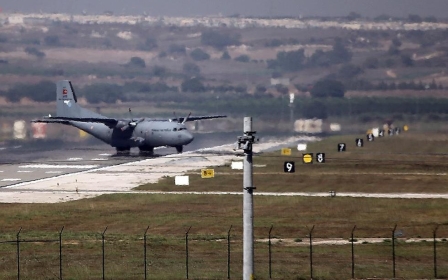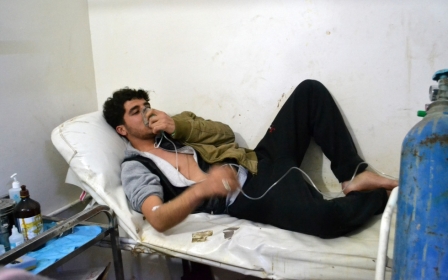No-fly zone for Syria: A sceptical view
Published date: 10 September 2015 12:47 BST
|
Last update: 9 years 2 months ago
While the impetus to protect civilians from barrel bombs is great, the precedents for effective intervention using no-fly zones are not good

On its surface, Syria seems to offer an ideal case for humanitarian intervention. An incredible half of the 23 million Syrians are either internally displaced or refugees living in dire circumstances, aggravating the refugee crisis currently overwhelming Europe. What may be worse, mass atrocities have continued under the authority of the Damascus regime since March 2011, and for the last year ISIS has emerged as a principal opposition force itself responsible for unprecedented barbarism.
Beyond all of this, diplomacy has been a repeated failure. The UN has appointed several distinguished Special Envoys who have resigned in disgust, unable to rely on ceasefire reassurances from President Bashar al-Assad and the two Geneva inter-governmental conferences ended in frustration. Culminating this depressing picture, the parties to the conflict seem badly stuck, neither having a path to victory nor a willingness to compromise.
Not surprisingly, such a spectacle of suffering, with its regional spillover effects destabilising Lebanon, Iraq, and Turkey, is prompting a renewed call for humanitarian intervention, most influentially, in the form of a no-fly zone (NFZ) designed to protect Syrians from the ravages wrought by notorious barrel bombs used by Damascus to make civilian governance impossible in rebel-held areas of the country.
Proponents argue that once a NFZ is established it will ease civilian suffering, and might even exert sufficient pressure on the Syrian leadership to create a climate where diplomatic compromise is finally attainable and this terrible war brought to an end, possibly even with a nudge from Iran and Russia.
The UN just held a self-congratulatory session celebrating the 10th anniversary of the R2P (or responsibility to protect) norm, while noting that there was work to be done considering the existence of ongoing killing fields in Syria, Iraq, South Sudan, Central African Republic and North Korea. Notably absent from the list, a supreme instance of diplomatic tact at its hypocritical worst, was Gaza, and more generally, occupied Palestine, which since 2012 is after all a “state” in the eyes of the General Assembly.
Leaving such embarrassment aside, this question should be asked: Why has R2P not been applied to Syria? The answer illuminates what is wrong with the cynical way world order operates in a post-Cold War setting, being more protective of trade and finance than it is of people.
Responsibility to protect
The superficial obstacle to a R2P operation in Syria is the geopolitical standoff between states continuing to back the Assad regime and those supporting the opposition. This means that approval of an NFZ as a tactic compatible with the UN Charter, is unavailable because of an anticipated Russian veto. Thus any use of force, such as establishing a NFZ, in either the north or south of Syria, or both, would neither have the backing of the UN Security Council nor qualify as self-defence. This means that such an undertaking would violate the Charter on its key principle of regulating recourse to international force, overlook the requirement of UN approval included in the R2P approach, and further undermine the authority of international law.
A less superficial explanation of this blockage arises from the R2P precedent set in Libya where Russia and China were persuaded to allow a proposed humanitarian NFZ in Libya to go forward only to find that NATO’s intentions from the outset were regime change. What seemed to sceptics about R2P as clear deception has left a bad taste that has definitely hampered a cooperative approach to Syria, marginalising the role of the UN, and cooperation between leading governments with a stake in the conflict.
Then there is the earlier Kosovo precedent in which a humanitarian intervention was controversially carried out under the authority of NATO before the R2P norm existed and in the face of Russian opposition. Arguably, the operation was a success, Serbian oppressive rule ended, Kosovo saved from an impending episode of ethnic cleansing similar to the Srebrenica massacre of Bosnian males (1995), and the UN entered the post-conflict scene to help with the transition to political independence. One appraisal of Kosovo pronounced the NATO intervention as unlawful, yet legitimate, because it effectively addressed an imminent threat of mass atrocity.
Kosovo - a poor predecent
Several problems arise if relying on Kosovo to justify establishing a NFZ in Syria. First of all, Syria is a much larger country within which a civil war has been raging for more than four years causing an estimated 300,000 deaths; while the Syrian government has sophisticated anti-aircraft capabilities, and no oil.
Secondly, Europe was unified with regard to an anti-Serb intervention in Kosovo, with the partial exception of Greece, whereas the Middle East is so deeply divided with respect to Syria as to be engaged on opposite sides of a proxy war with sharp sectarian dimensions.
Thirdly, the opponents of NFZ, unless persuaded to change their position, are more directly involved, and could take steps to minimise the impact of such an operation.
Fourthly, even assuming that a Syrian NFZ would be effective, the elimination of Syrian air power might actually work to the advantage of ISIS, which operates exclusively on the ground. Unlike Kosovo where the US was eager to demonstrate that NATO still had a role in the post-Cold War world, the geopolitical motivation in Syria remains confused, even uncertain. Also, the US has had bad experiences with its recent interventions, especially Iraq and Afghanistan, and wants to avoid intervening directly.
And fifthly, the present scene in Libya and Iraq show that handling the effects of even a militarily successful intervention can lead to prolonged chaos and militia governance. Such realities are not experienced by the population as improvements over the old authoritarian orders held together by the brutality of Gaddafi and Saddam Hussein.
Further in the background are considerations associated with state-centric world order in a post-colonial setting, which in the Middle East has left many bad memories of the harm the colonial powers did to the region after the collapse of the Ottoman Empire in 1918. To override the sovereignty of a state, and its capacity for national resistance, ignores the experience of the world in the period since 1945 where almost every Western intervention has been a political failure.
So here is the dilemma: to stand by doing nothing while mass atrocities occur year after year in Syria with no end in sight is an intolerable failure of moral responsibility for human suffering of this innocent civilian population. Yet to do something that will improve the situation is far from obvious, and the record of NFZs in the sort of situation that exists in Syria is not encouraging.
Advocates of intervention
A recent report by the International Crisis Group, in a far less provocative manner than advocates of an NFZ, proposes the adoption of a more assertive American approach, starting with what is tactically easier, a range of overt and covert initiatives in southern Syria where moderate anti-regime forces are in greater control, and then to the extent that these successful, organising a second set of initiatives in the more contested northwest where the Syrian regime’s greater presence is a bigger obstacle and besides, ISIS has its strongholds.
General Martin Dempsey, the US chairman of the Joint Chiefs of Staff, recently warned against a NFZ, pointing out that Syria’s anti-aircraft capabilities are at least five times greater than what Libya possessed, including some high-end systems capable of shooting down high altitude planes.
All in all, the West cannot stand one more failed intervention in the Middle East, nor can it leave unattended a deep humanitarian crisis spilling over Syrian borders. The burden in such a tragic situation should be placed on pro-interventionists to show convincingly how a NFZ can be established and maintained in the face of expected resistance from within and opposition from without. So far this burden has not been sustained.
And there exists a more drastic diplomatic approach that should have been tried long ago, and still seems worth the effort: bringing Iran and Russia into a peace process as major players, overriding objections by Saudi Arabia and Israel. Such a diplomatic atmosphere might at last create the war-ending conditions for compromise and cooperation.
In this altered setting, either NFZ could find support within the Security Council or it would no longer be needed. This diplomatic initiative is admittedly a long shot, but better than the alternatives of doing nothing or acting outside the framework of the UN and international law with scant guarantees of success.
- Richard Falk is an international law and international relations scholar who taught at Princeton University for 40 years. In 2008 he was also appointed by the UN to serve a six-year term as the Special Rapporteur on Palestinian human rights
The views expressed in this article belong to the author and do not necessarily reflect the editorial policy of Middle East Eye.
Image: Syrian search and rescue team look for the victims after Syrian attack in Ariha neighborhood in Idlib, Syria on 6 September, 2015. A separate attack carried out by Syrian army helicopters in the town of Ariha south of Idlib killed at least six others, another local civil defence source said. (AA)
New MEE newsletter: Jerusalem Dispatch
Sign up to get the latest insights and analysis on Israel-Palestine, alongside Turkey Unpacked and other MEE newsletters
Middle East Eye delivers independent and unrivalled coverage and analysis of the Middle East, North Africa and beyond. To learn more about republishing this content and the associated fees, please fill out this form. More about MEE can be found here.





